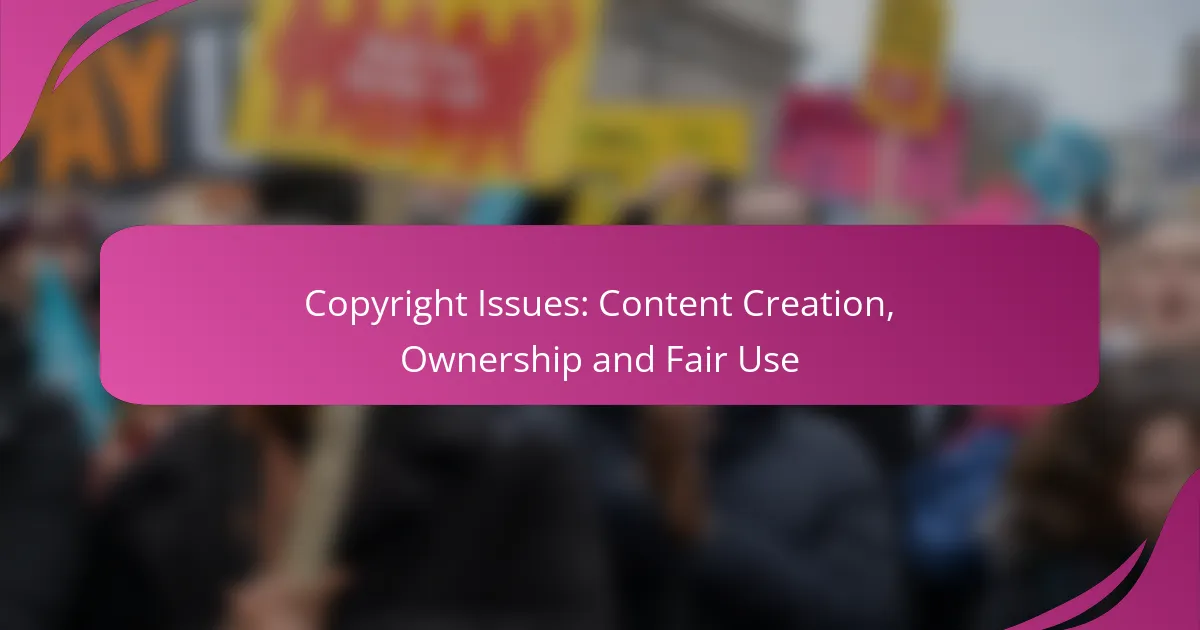Copyright issues play a crucial role in content creation, encompassing ownership, fair use, and the risk of infringement. Understanding these elements is essential for creators to protect their rights and navigate the complexities of sharing their work. By grasping copyright laws and the principles of fair use, content creators can ensure their contributions are both legally compliant and ethically sound.
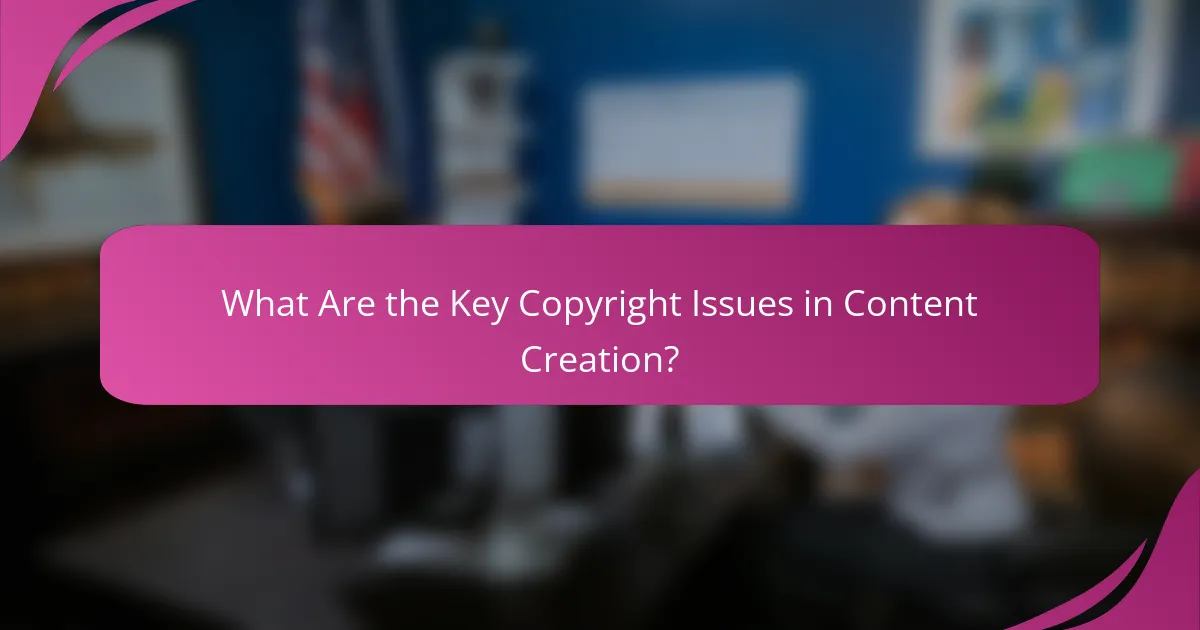
What Are the Key Copyright Issues in Content Creation?
Key copyright issues in content creation include understanding ownership, navigating fair use, and avoiding infringement. Creators must be aware of how these factors affect their rights and responsibilities when producing and sharing content.
Plagiarism risks
Plagiarism involves using someone else’s work without proper acknowledgment, which can lead to legal consequences and damage to reputation. Even unintentional plagiarism can occur if creators do not adequately differentiate their ideas from those of others.
To mitigate plagiarism risks, always cite sources and use quotation marks for direct quotes. Tools like plagiarism checkers can help identify potential issues before publication.
Licensing challenges
Licensing challenges arise when creators need to use copyrighted material, such as images or music, that they do not own. Obtaining the right licenses can be complex and costly, depending on the type of content and its intended use.
Consider using royalty-free or Creative Commons licensed materials to simplify the licensing process. Always read the terms of the license to ensure compliance with usage restrictions.
Attribution requirements
Attribution requirements dictate how creators must credit original authors when using their work. These requirements vary based on the type of license and can include specific formats for citation.
Familiarize yourself with the attribution guidelines associated with any content you use. Failing to provide proper attribution can lead to copyright infringement claims, so always err on the side of caution when in doubt.

How to Establish Ownership of Created Content?
Establishing ownership of created content involves understanding copyright laws and taking specific steps to protect your work. This includes registering your copyright, drafting work-for-hire agreements, and considering joint authorship when collaborating with others.
Copyright registration process
The copyright registration process typically involves submitting an application to the relevant government office, such as the U.S. Copyright Office. This application usually requires details about the work, such as its title, author, and the date of creation.
Once submitted, you may need to pay a fee, which can range from a few dozen to a few hundred dollars depending on the type of work. Registration provides legal benefits, including the ability to sue for infringement and eligibility for statutory damages.
Work-for-hire agreements
A work-for-hire agreement is a contract where the creator agrees that the employer or client owns the rights to the created content. This is common in freelance work and employment situations, ensuring clarity on ownership from the start.
To be valid, the agreement should be in writing and specify that the work is a work-for-hire. Without this, the creator may retain rights, which could lead to disputes later on.
Joint authorship considerations
Joint authorship occurs when two or more individuals collaborate on a work, sharing ownership rights. To qualify as joint authors, all contributors must intend to create the work together and have equal control over its use.
It’s crucial to document the agreement among authors regarding rights and responsibilities. This can prevent conflicts over how the work is used or monetized in the future, especially if the work generates revenue.
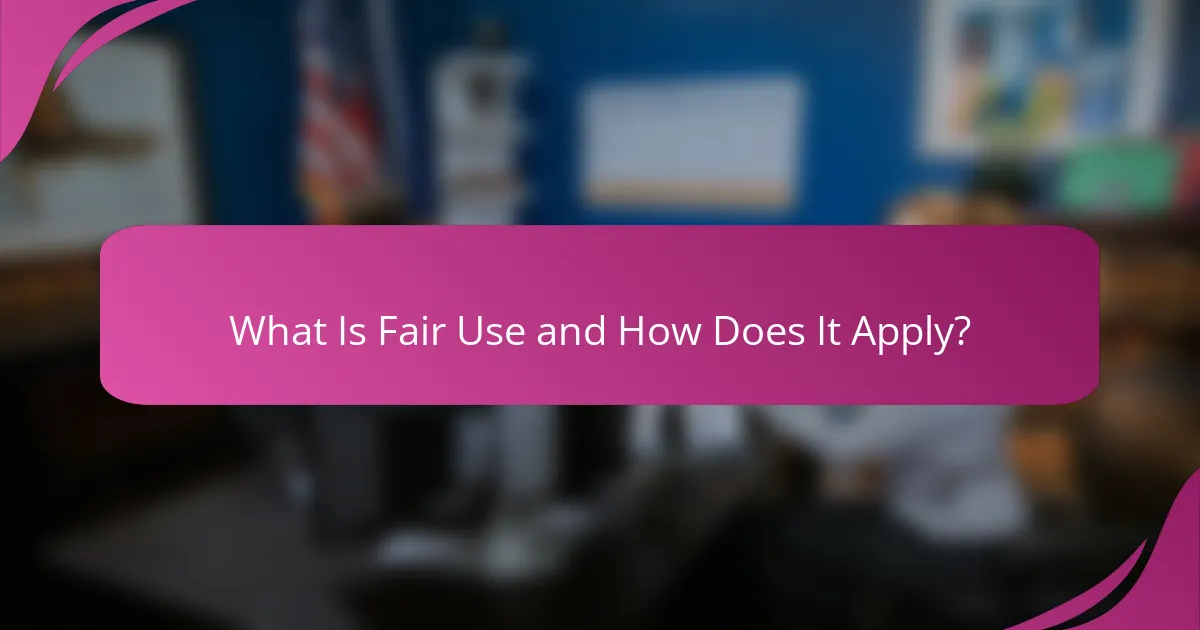
What Is Fair Use and How Does It Apply?
Fair use is a legal doctrine that allows limited use of copyrighted material without permission from the copyright owner. It is primarily intended to balance the interests of creators with the public’s right to access and use information.
Definition of fair use
Fair use refers to the ability to use copyrighted material in a way that does not infringe on the rights of the copyright holder. This concept is rooted in U.S. copyright law and is designed to encourage creativity and scholarship while protecting the rights of original creators.
Under fair use, individuals can use portions of copyrighted works for purposes such as criticism, comment, news reporting, teaching, scholarship, or research without seeking permission. However, determining whether a specific use qualifies as fair use can be complex and often requires legal analysis.
Four factors of fair use
To assess whether a use qualifies as fair use, courts typically consider four key factors: the purpose and character of the use, the nature of the copyrighted work, the amount and substantiality of the portion used, and the effect of the use on the market for the original work.
- Purpose and character: Uses that are transformative or for non-commercial purposes are more likely to be considered fair.
- Nature of the work: Using factual works is more likely to be fair use compared to creative works.
- Amount used: Using smaller portions of a work is generally more favorable for fair use claims.
- Market effect: If the use negatively impacts the market for the original work, it is less likely to be considered fair.
Examples of fair use cases
Common examples of fair use include quoting a few lines from a book in a review, using a clip from a film for educational purposes, or incorporating a short excerpt of a song in a commentary. These uses typically fall within the bounds of fair use as they serve a transformative purpose.
Notable legal cases, such as Campbell v. Acuff-Rose Music, Inc., illustrate how courts analyze fair use. In this case, the Supreme Court ruled that a parody of a song could qualify as fair use, emphasizing the importance of the transformative nature of the use.
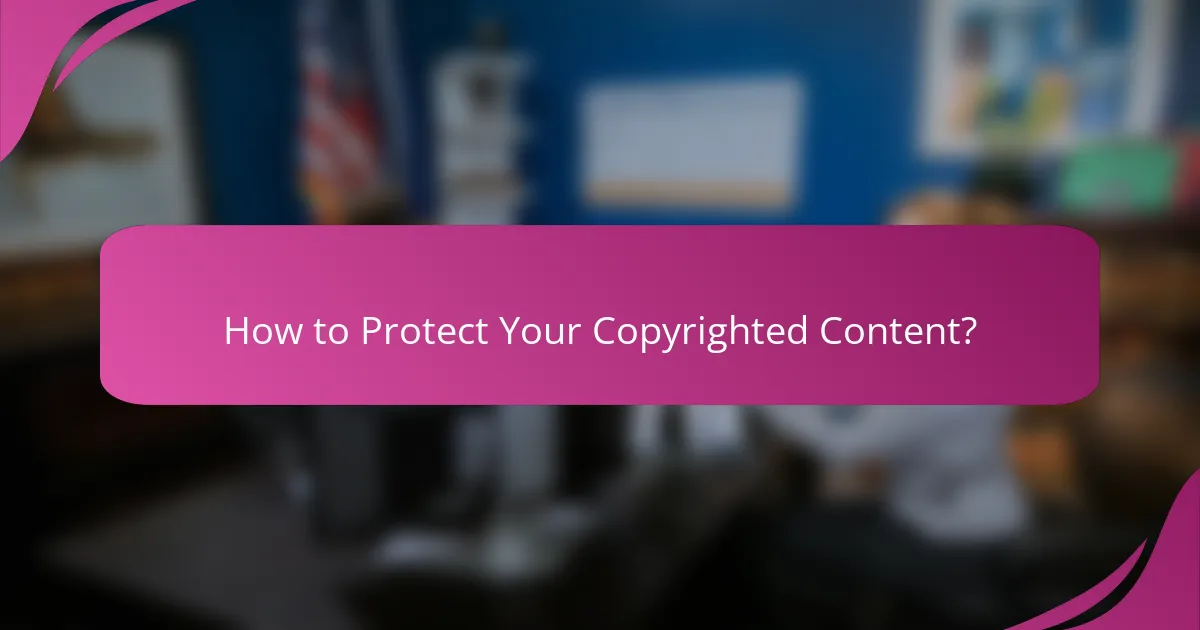
How to Protect Your Copyrighted Content?
To protect your copyrighted content, you should take proactive steps such as using copyright notices, monitoring for infringement, and understanding DMCA takedown procedures. These measures help assert your ownership and facilitate action against unauthorized use.
Using copyright notices
Including a copyright notice on your work is a straightforward way to assert your rights. A typical notice includes the © symbol, the year of first publication, and your name or the name of your organization. For example, © 2023 John Doe.
While not legally required, a copyright notice serves as a clear signal to others that the content is protected. This can deter potential infringers and strengthen your position in any legal disputes.
Monitoring for infringement
Regularly monitoring your content online is essential to identify unauthorized use. Tools like Google Alerts or specialized copyright monitoring services can help track where your content appears. This proactive approach allows you to respond quickly to potential infringements.
Consider setting up a routine check, perhaps monthly, to review your content’s usage across various platforms. This can help you stay informed and take necessary actions against unauthorized use.
DMCA takedown procedures
The Digital Millennium Copyright Act (DMCA) provides a legal framework for addressing copyright infringement online. If you discover that someone is using your content without permission, you can file a DMCA takedown notice with the hosting provider of the infringing content.
To file a DMCA notice, include specific information such as your contact details, a description of the copyrighted work, and the location of the infringing content. Many platforms have streamlined processes for submitting these notices, making it easier to protect your rights.
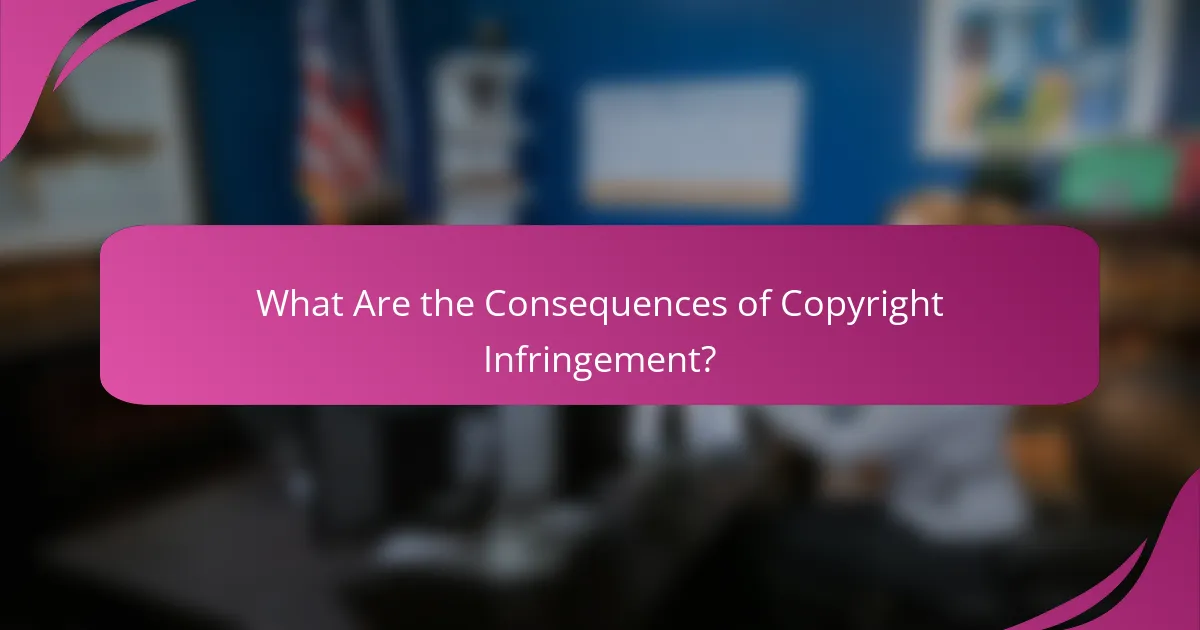
What Are the Consequences of Copyright Infringement?
Copyright infringement can lead to serious legal and financial repercussions for individuals and businesses. Understanding these consequences is crucial for anyone involved in content creation or distribution.
Legal penalties
Legal penalties for copyright infringement can include civil lawsuits, where the copyright holder may seek injunctions to stop the infringing activity and demand that the infringer pay legal fees. In some cases, criminal charges may apply, especially for willful infringement, leading to fines or even imprisonment.
In the United States, for example, statutory damages can range from hundreds to thousands of dollars per work infringed, depending on whether the infringement was deemed willful. This emphasizes the importance of obtaining proper licenses and permissions before using copyrighted material.
Financial damages
Financial damages resulting from copyright infringement can be substantial. In addition to potential statutory damages, infringers may be liable for actual damages, which include lost profits for the copyright owner and any profits the infringer made from the infringement.
For instance, if a company uses a copyrighted image without permission and generates significant revenue from it, they may be required to pay not only for the image’s value but also for the profits made from its unauthorized use. This can lead to financial strain, especially for small businesses or individual creators.
